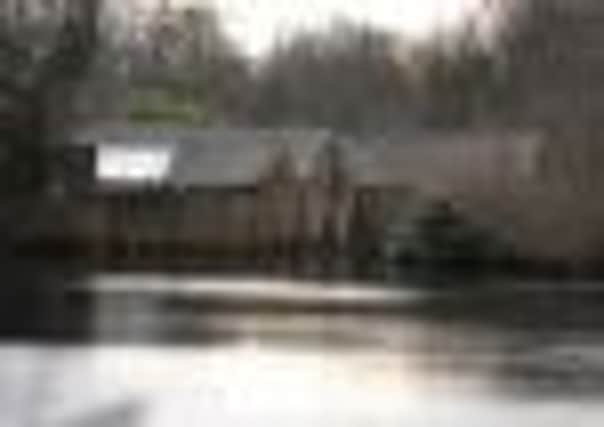Campaigners launch battle to block homes plans for mill site


Olive House Works in Black Lane was originally built as a paper mill and grinding mill and still contains the remains of two cast-iron water wheels, as well as a main water wheel outside.
City planners say the use of two wheels is a “rare feature” and any plans to convert the mill buildings, behind Wisewood Cemetery, should also make arrangements for access to maintain and repair the water wheels in the future.
Advertisement
Hide AdAdvertisement
Hide AdOpposition to the scheme has come from organisations including the Loxley Valley Protection Society, Hillsborough and District Buildings Preservation Trust and the South Yorkshire branch of the Campaign to Protect Rural England (CPRE).
John King, planning officer at the CPRE, said: “As part of the industrial heritage of Sheffield, Olive Mill Works has significant historical value. Consequently, any refurbishment must retain the building’s industrial character and valued historical features.
“CPRE South Yorkshire is concerned by the additions of domestic features such as front and rear gardens, verandas and internal courtyards. These alterations will result in the buildings losing their industrial appearance and will have an adverse impact on the character of this part of the Loxley Valley.”
Mr King went on to say that the water wheels and other industrial machinery should be “retained and restored” and added: “A complete restoration of the whole site, including the water wheels, may provide an opportunity to re-establish the use of water power to generate electricity.”
Advertisement
Hide AdAdvertisement
Hide AdJan Symington, from the Loxley Valley Protection Society, said that three dwellings on the site would constitute overdevelopment and added: “The development needs to be carefully conditioned to ensure the integrity of the listed building is maintained and that the development does not impinge upon its very special setting.”
John Bailey has also objected to the council on behalf of the Hillsborough and District Buildings Preservation Trust. He said: “The mill forms part of the industrial heritage of Sheffield, which extends from Olive Terrace to the mill, past the water wheels to Rowell Bridge.
“This part of the scene of the Loxley Valley will be lost if the mill is given a change of use to residential.”
Six members of the public have also written letters of objection, pointing out that the site is in designated green belt land and also claiming that additional traffic using Black Lane could be hazardous for walkers. Other objectors say the development could be harmful for wildlife.
Advertisement
Hide AdAdvertisement
Hide AdSheffield-based developer Sevenhills Estates originally submitted the plans last year, but they were withdrawn. Councillors will now make a final decision on the scheme at a planning committee meeting tomorrow.
In their correspondence with Sheffield Council’s planning department, agent Peart Bradley Architects says that a cog on the mill – the only example of industrial remains inside the building – will be retained and said they were seeking the “highest standard” of design.
Blueprints drawn up by the archichitect show plans for one three-bedroomed house, one four-bedroomed house and one five-bedroomed house, with parking on site for six cars.
The homes would be built using “sympathetic and matching materials” and Sheffield Council’s conservation officer says the conversion of the mill would not affect the “setting and character of the wheel and wheel pit.”
Advertisement
Hide AdAdvertisement
Hide AdCity planners are also backing the scheme and have advised councillors to grant consent at tomorrow’s meeting.
In their report, which is set to go before that meeting, the planning officers say: “Industrial use of the building would involve large vehicles and employees vehicles using Black Lane at a greater rate than the generation from the proposed use.
“The proposal would be considered to have an acceptable impact upon the open character of the green belt, and to safeguard the architectural and historic character of the listed building.
“The full planning application and application for listed building consent are each considered to be acceptable and therefore approval is recommended.
Advertisement
Hide AdAdvertisement
Hide Ad“It is also recommended that the planning application be granted subject to the applicants entering into a legal agreement to allow additional access to the water wheels.”
Fence Warning to householder
CITY planners are also recommending that a householder in Chapeltown should be forced to take down a “too-high” fence which was put up without planning permission.
Three neighbours have objected to the unauthorised development at a semi-detached house in Redwood Glen, which consists of a wall with wooden fencing panels on the top.
Planning officers, who have recommended that councillors order enforcement action, say: “The high wall and fence is out of character with other corner plots in the area.”
If councillors agree with the officers’ recommendations, the householder will have six months to remove the fencing panels.